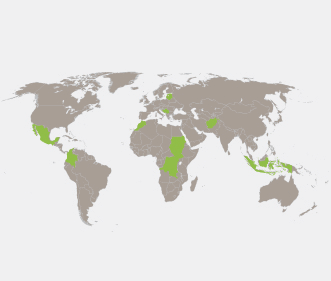On September 27, 2012, in the latest effort to quell tensions in the disputed border region separating the two states, Sudan and South Sudan signed a Cooperation Agreement. Included in the agreement is a plan to create a demilitarized zone in the five most disputed areas, extending 10 kilometres on each side of a temporary non-binding border. While it is obvious this step will help those living in the border region who depend on cross-border flows for their livelihood, overarching concerns related to security and oil production still remain.
South Sudan, which is home to approximately three-quarters of the oil in both states, remains dependent on northern pipelines. However, since January 2012, oil production in the South has been scaled back due to disputes over transit costs imposed by the North. While the issue was seemingly settled in the September agreement, both sides have yet to withdraw their forces for the creation of the demilitarized zone. In the latest development in late November, Sudan has attached a condition to the deal which requires the South to demobilize the Sudan People’s Liberation Movement-North (SPLM-North), a rebel movement that operates between the borders of the two states (a condition the South has also claimed would be nearly impossible to fulfill).
While this situation is the latest development in bilateral relations between the North and South, disputed borders, conflict over oil revenue and the need for DDR is hardly a new story. In fact, this trisected reality remains one of the chief obstacles to overall security sector reform in both states. For South Sudan, the DDR process to date has been a slow if not incomplete process. Under the 2005 Comprehensive Peace Agreement which ended the second Sudanese civil war, both the North and South agreed to the CPA-DDR program which was primarily supported by UN agencies (UNDP, UNICEF, UNMIS(S)). However, as many have noted, the CPA-DDR program, which was formally closed in December of 2011, fell far short of its objectives in terms of actual numbers demobilized. Since that time, a new DDR initiative has been implemented under the National Disarmament, Demobilisation and Reintegration Council. Moreover, in the SPLA Objective Force 2017—which is the official plan to transform the army from a guerrilla force into a conventional army under civilian control—a target for a force size of no more than 120,000 has been set. However, with some estimates on the current strength of the SPLA running as high as 200,000, effective DDR remains a significant challenge. And while it is still too early to tell how successful this new initiative will be, the latest border dispute highlights some of the complications that will be faced going forward. In this, while the oil may soon start flowing again to the mutual benefit of both the North and South, behind the scenes the underlying disputes between Sudan and South Sudan will likely continue disincentivising both to completely commit to demobilization processes.
Having said this, as in many things the cause may also be the cure. Because tension over oil remains at the root of much of the animosity between the North and South, normalizing its flow and reaching an agreement both can live with would likely go a long way to reducing the prospects of conflict. On this front guarded progress has been made in the past few days as it has been reported that Sudan and South Sudan have reached a tentative agreement on oil transit fees, which could see Sudan generate upwards of $100 million USD per month. Furthermore, the demilitarized zone that has been proposed under recent negotiations administered by the African Union could also serve as a vital first step in the short term, while in the long term both a stable oil agreement and a reduction on military personnel on or near the border could go a long way for creating the type of environment in both states where real SSR and DDR progress can be made.
Jonathan Blackham is a Research and Communications Intern at the Security Governance Group.
Tags: Disarmament Demobilization and Reintegration, South Sudan






 Visit the Centre for
Visit the Centre for